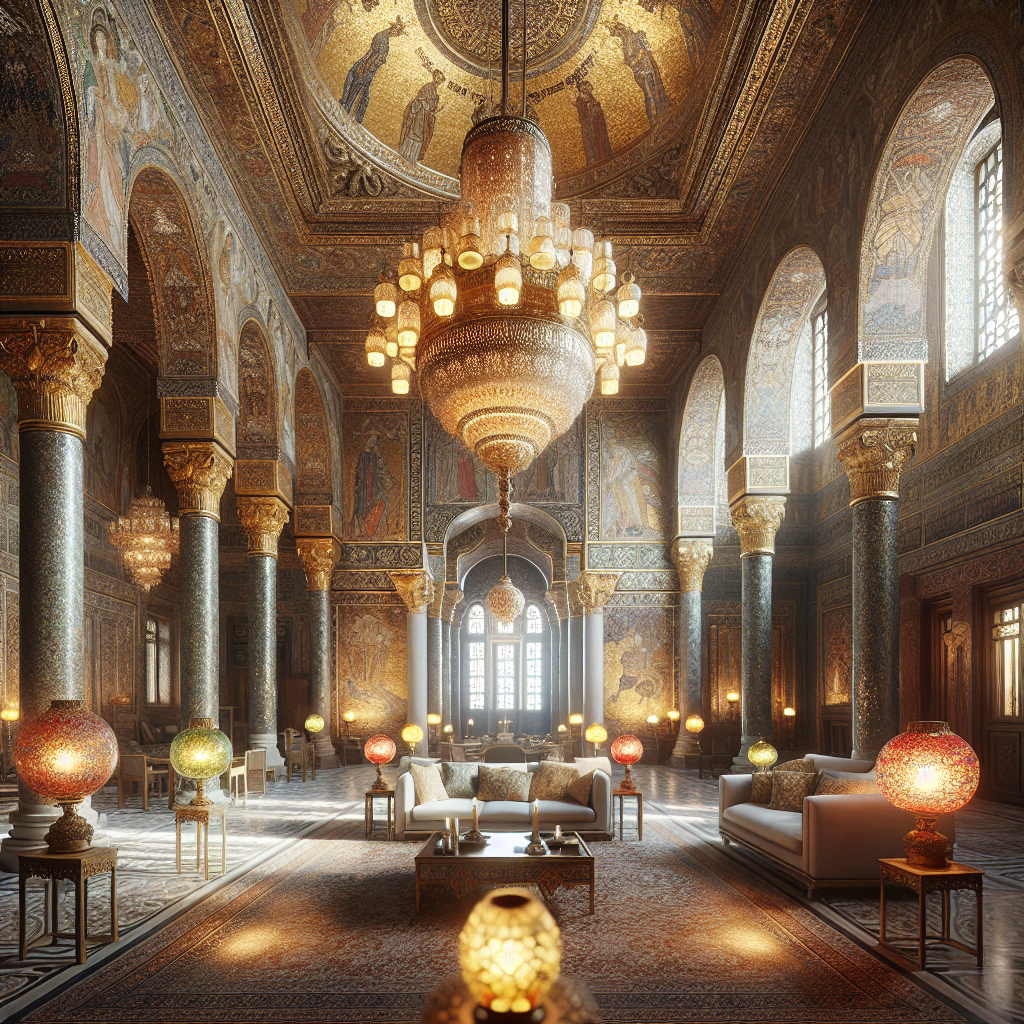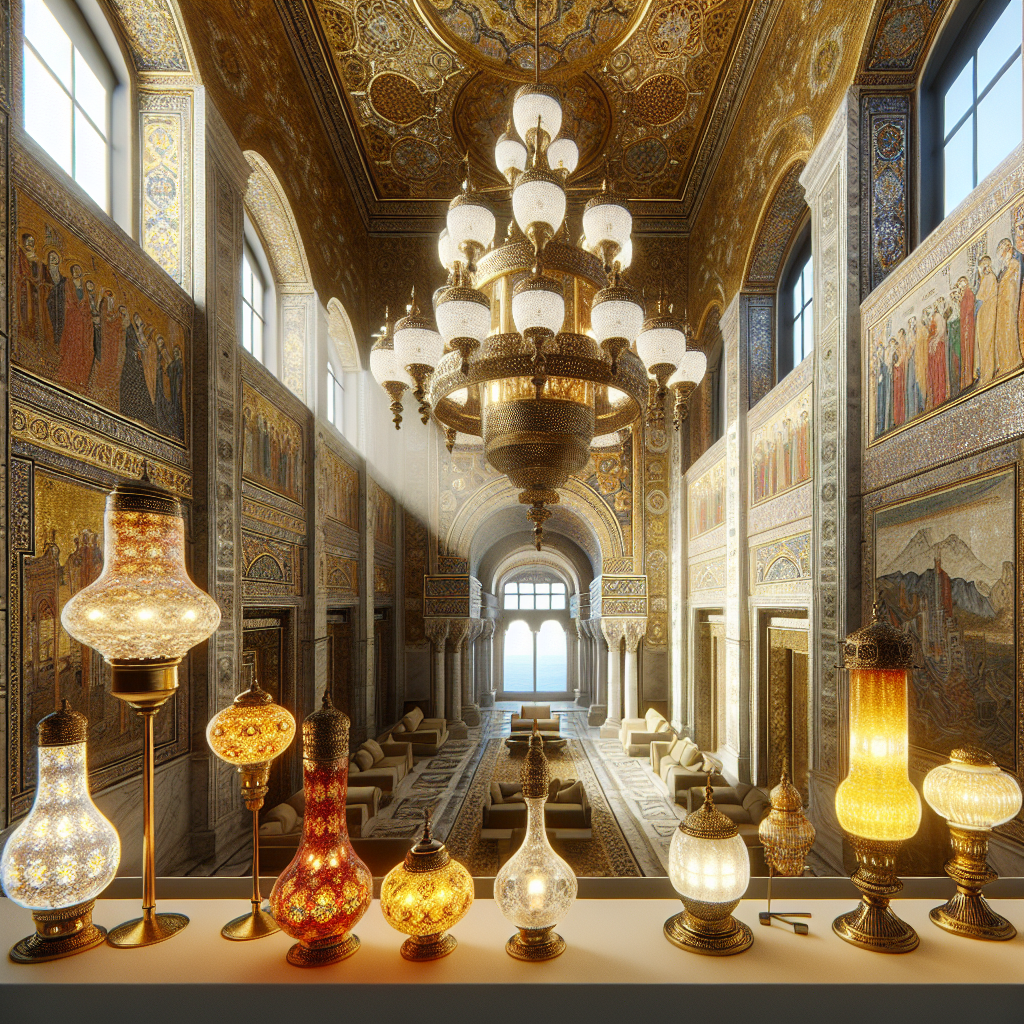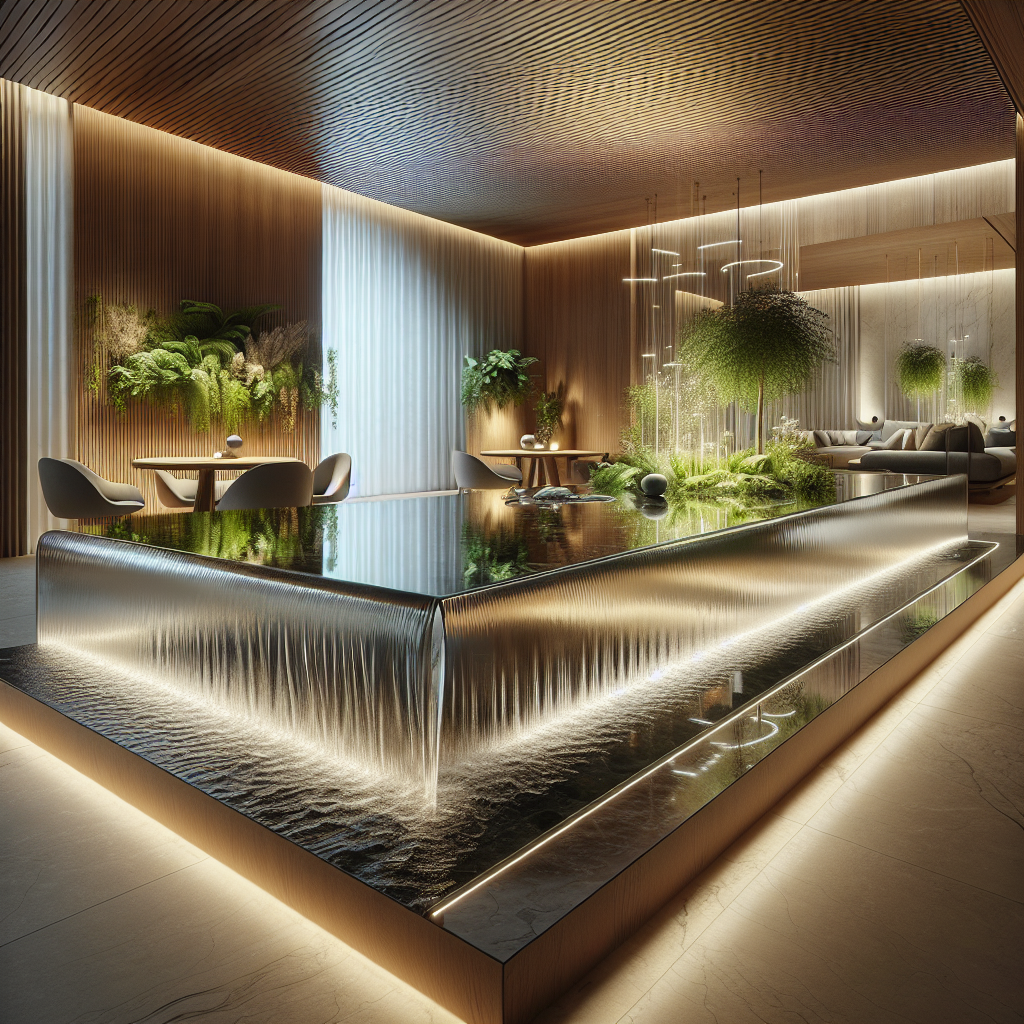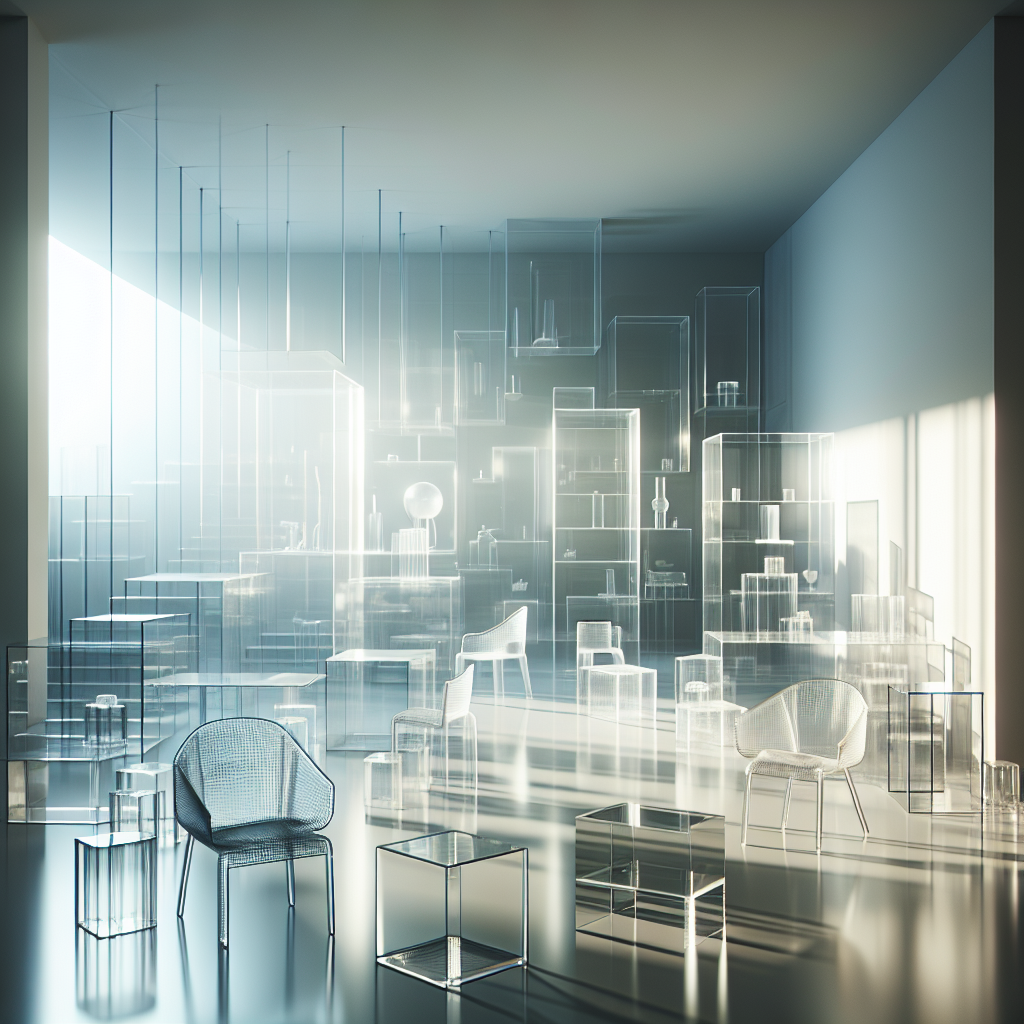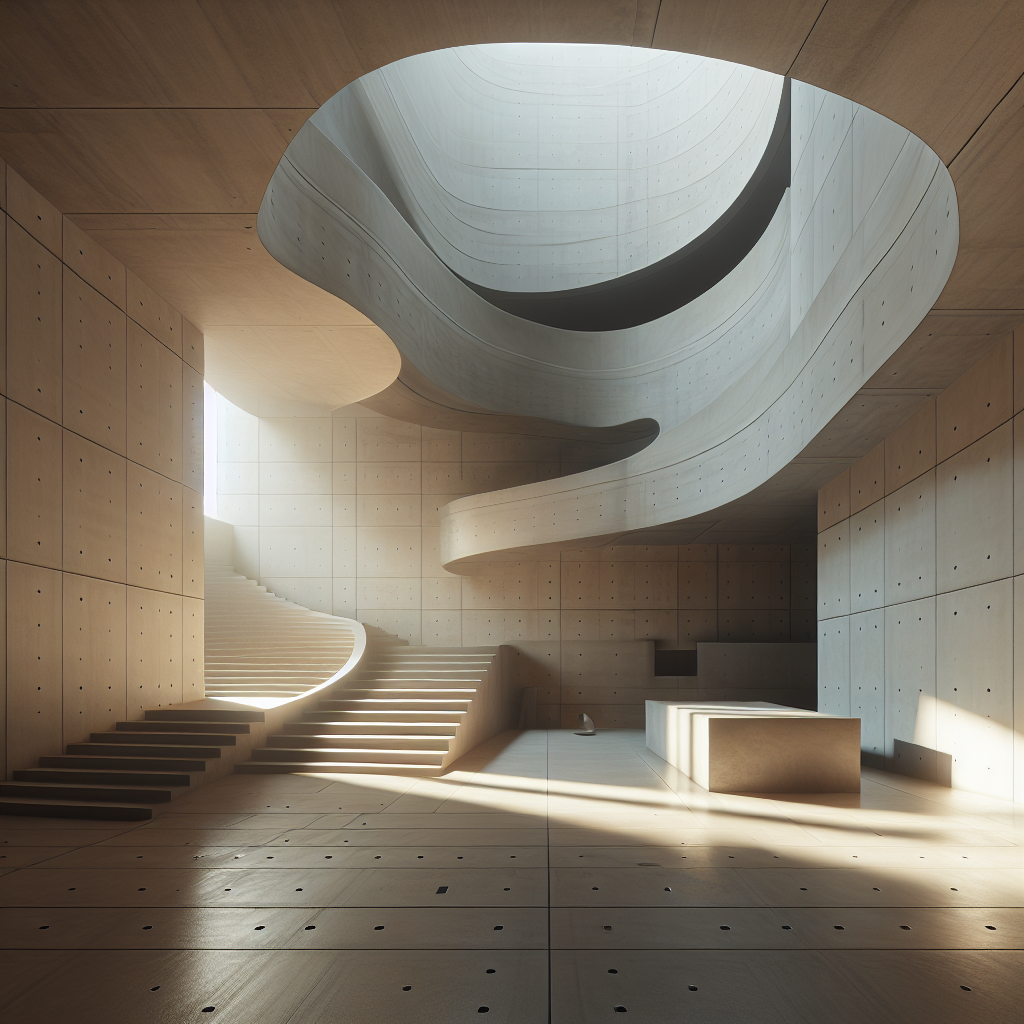Ancient Urban Renewal: Lessons in Sustainability from Medieval Towns

Illuminating the Past: Tracing the Evolution of Interior Lighting in Byzantine Palaces
The Byzantine Empire, with its epicenter in Constantinople, was a beacon of art, culture, and technological advancement. Among the myriad contributions to civilization, the evolution of interior lighting in Byzantine palaces stands as a testament to the empire’s ingenuity and aesthetic sophistication. As we delve into the luminescent legacy of this bygone era, we uncover the interplay of function, form, and faith that characterized the luminous interiors of Byzantine architecture.
The Genesis of Byzantine Lighting Design
Lighting in Byzantine palaces was not merely a utilitarian feature; it was an integral part of the architectural design, symbolizing the divine and the ethereal. The Byzantine aesthetic was characterized by an interplay of light and shadow, designed to create an atmosphere of heavenly splendor. Byzantine architecture harnessed natural light to dramatic effect, with interiors crafted to amplify the mystical experience of the divine.
Palatial spaces were adorned with reflective materials such as gold mosaics and polished marble, which caught and dispersed the rays of light. This interplay of surfaces transformed the mundane into the magnificent, creating a celestial ambiance that was both inspiring and symbolic of the empire’s connection to the heavens.
The Role of Ceremonial Lighting
In the grandeur of Byzantine palaces, ceremonial lighting played a pivotal role. Grand chandeliers, often wrought from precious metals and adorned with jewels, hung from high ceilings, casting a glow that was both opulent and awe-inspiring. These lighting fixtures were not just sources of illumination; they were masterpieces of art and craftsmanship, reflecting the empire’s wealth and artistic prowess.
During significant events and religious ceremonies, lighting took on a performative aspect. The strategic placement of lamps and the choreographed lighting of candles would accentuate the drama of the occasion, enhancing the spiritual and emotional impact on those in attendance.
Advancements in Lighting Technology
The Byzantines were no strangers to innovation. Their quest for improved interior lighting led to advancements in lamp design and fuel efficiency. Olive oil, a resource plentiful in the Mediterranean, was commonly used as fuel for lamps. Byzantine artisans crafted intricate oil lamps and lanterns, which not only served practical purposes but also stood as objects of beauty and luxury.
With the progression of time, the Byzantines explored other materials such as glass to create lamps that not only enhanced the quality of light but also contributed to the decorative appeal of the space. The Byzantine art of glassmaking flourished, with colored glass lamps adding a new dimension to the lighting design, casting hues that enriched the visual tapestry of palace interiors.
The Symbolism of Light in Byzantine Culture
Light in Byzantine culture was laden with symbolism. It represented the divine wisdom and the presence of God, a concept deeply embedded in the empire’s Orthodox Christian beliefs. This symbolism was manifest in the architectural design of palaces, where light was manipulated to create an ambiance that transcended the physical and gestured towards the spiritual.
Iconic structures such as the Hagia Sophia, with its dome seemingly afloat on a halo of light, exemplify the ingenious use of natural lighting to create a sense of divine presence. The interplay of light and structure in such spaces served to elevate the soul, guiding it towards contemplation and reverence.
Preserving the Legacy of Byzantine Lighting
Today, the remnants of Byzantine palatial lighting continue to fascinate historians, architects, and designers. Modern technology has allowed for the restoration and recreation of these lighting techniques, offering a glimpse into the opulent past. Contemporary lighting design often draws inspiration from the Byzantine approach, seeking to create spaces that are not just illuminated but imbued with meaning and emotion.
At the crossroads of history and modernity, we find a renewed appreciation for the subtleties of Byzantine lighting. The empire’s legacy lives on, informing and inspiring the lighting design of today, as we continue to seek out ways to harmonize form, function, and the ineffable qualities of light.
For further exploration of the impact of historical design on contemporary spaces, consider perusing the insights on ancient influences in modern spaces. And to understand the broader context of Byzantine artistry, the article on Byzantine artistic legacy offers a comprehensive overview.
As we continue to explore the vast tapestry of design history, it’s clear that the Byzantine approach to interior lighting was not just about illumination—it was about creating an experience that transcended the mere act of seeing. It was about crafting an environment where light danced with architecture to tell a story of power, faith, and artistic expression. And in this story, the past continues to cast its luminous reflections upon the present, guiding us towards a future where the lessons of history illuminate the path forward.
For those captivated by the transformative power of lighting in design, the exploration of lighting as an art form delves into the contemporary applications of these ancient principles, showcasing how the ethos of Byzantine illumination continues to resonate within the realm of modern interior design.
As we traverse the corridors of history, the evolution of interior lighting in Byzantine palaces remains a shining example of the empire’s enduring influence on the world of design and architecture. It is a legacy that continues to enlighten, inspire, and remind us of the power of light to transform space, perception, and experience.

